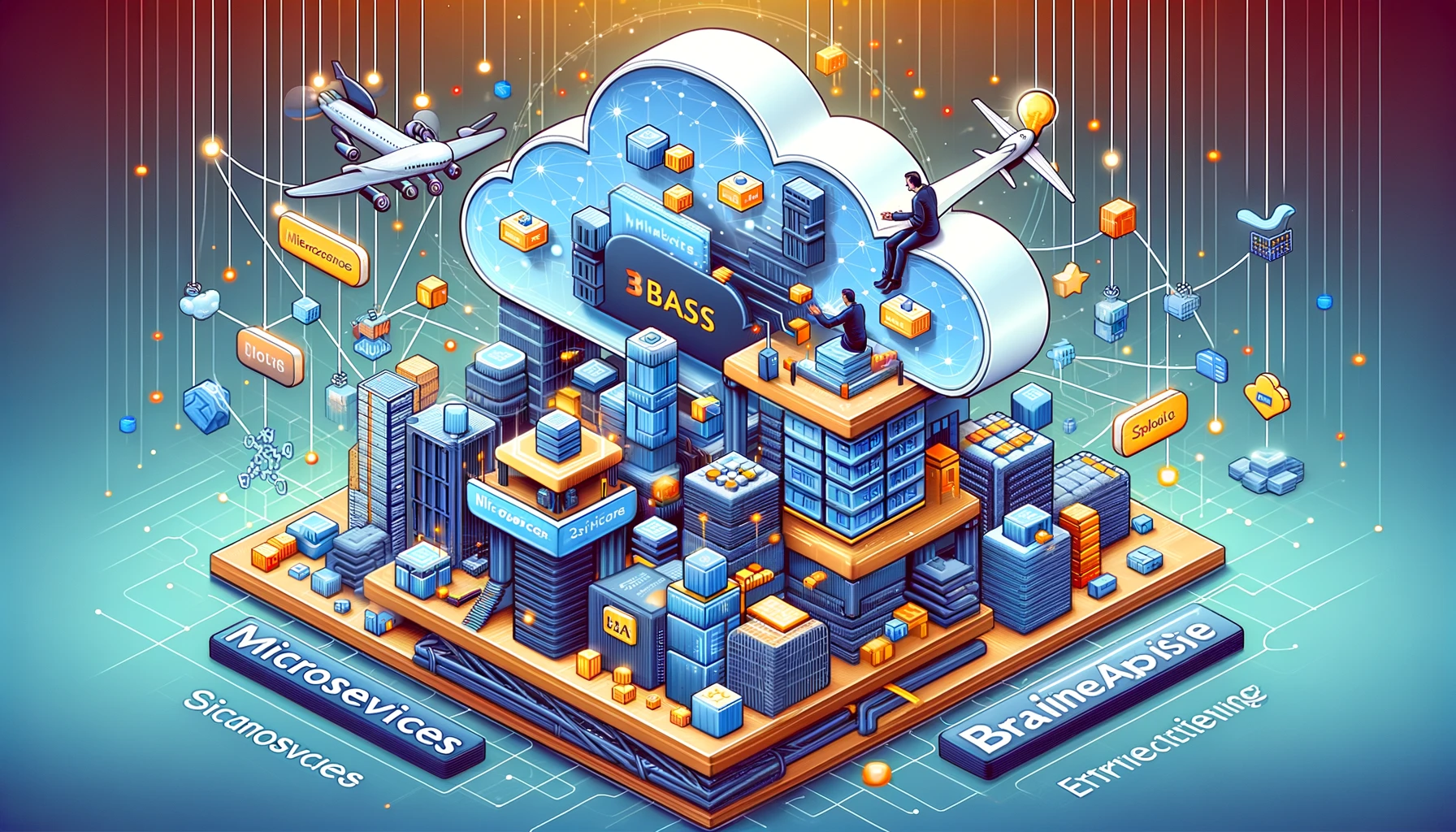The Role of Microservices Architecture in BaaS-powered Enterprise Applications: Unveiling the Synergy with StormAPI
In the ever-evolving landscape of enterprise software development, the adoption of microservices architecture has marked a significant shift towards more scalable, flexible, and resilient application structures. This architectural style, characterized by decomposing applications into loosely coupled services, aligns perfectly with the principles of Backend as a Service (BaaS) platforms like StormAPI. Together, they redefine the paradigms of enterprise application development, offering a blend of agility, scalability, and innovation. This article explores the intricate role of microservices architecture within BaaS-powered enterprise applications, with a focus on the integration and synergies facilitated by StormAPI.
Microservices Architecture: A Primer
Microservices architecture is a design approach that structures an application as a collection of small, autonomous services, each performing a unique function and communicating through well-defined APIs. This contrasts sharply with traditional monolithic architectures, where all components of an application are tightly integrated into a single unit. The microservices approach offers several advantages:
- Scalability: Individual services can be scaled independently, allowing for more efficient use of resources.
- Flexibility: Teams can develop, deploy, and update services independently, accelerating the development cycle.
- Resilience: The failure of one service doesn’t impact the entire application, enhancing overall reliability.
StormAPI: Elevating Microservices with BaaS
StormAPI, as a leading BaaS platform, provides an ideal environment for developing and deploying microservices-based enterprise applications. It offers a suite of backend services and tools that seamlessly integrate with microservices architectures, further enhancing their benefits. Below, we delve into how StormAPI empowers microservices in enterprise applications.
Simplified Service Deployment and Management
One of the key challenges in microservices architecture is the complexity of deploying and managing numerous independent services. StormAPI addresses this challenge by offering cloud-based infrastructure and automated tools for deploying, scaling, and monitoring services. This simplification allows enterprises to focus on developing the business logic of their services, leaving the operational complexities to StormAPI.
Enhanced Scalability and Performance
StormAPI’s auto-scaling capabilities ensure that each microservice can scale independently based on demand, without manual intervention. This feature is crucial for maintaining optimal performance across the application, especially for services experiencing varying loads. Furthermore, StormAPI’s global infrastructure ensures low latency and high availability, key considerations for enterprise applications requiring robust performance.
Streamlined Communication Between Services
Microservices architecture relies on efficient communication mechanisms to function cohesively. StormAPI facilitates this by offering built-in messaging and event-driven APIs, allowing services to communicate seamlessly in real-time. This not only enhances the responsiveness of the application but also simplifies the integration of new services, fostering innovation and agility in development processes.
Unified Security Across Services
Ensuring consistent security practices across all microservices can be daunting. StormAPI centralizes security management, providing uniform authentication, authorization, and encryption services that microservices can leverage. This centralized approach ensures that security is consistently enforced across the application, simplifying compliance with enterprise security policies and regulatory standards.
Facilitating Continuous Integration and Deployment (CI/CD)
The dynamic nature of microservices architecture demands robust CI/CD pipelines to manage continuous updates and deployments. StormAPI integrates with existing CI/CD tools, automating the deployment process for microservices and enabling rapid iterations. This integration is crucial for maintaining the agility and flexibility that microservices promise, allowing teams to deploy updates with minimal downtime.
Case Study: Implementing a Microservices-based Customer Service Platform with StormAPI
Consider a multinational corporation aiming to revamp its customer service platform using a microservices architecture to achieve better scalability, performance, and innovation. By choosing StormAPI as its BaaS platform, the corporation benefits from streamlined deployment and management of its microservices, each handling different aspects of the customer service process, such as ticketing, chat support, and analytics.
StormAPI’s auto-scaling capabilities ensure that the chat support service can handle sudden spikes in user queries, maintaining high responsiveness during peak hours. Simultaneously, the analytics service scales independently, processing vast amounts of data to derive customer insights without affecting the performance of other services.
The built-in messaging and event-driven APIs provided by StormAPI enable seamless communication between the ticketing and chat support services, ensuring that customer queries are efficiently routed and handled. Moreover, StormAPI’s unified security model simplifies the enforcement of stringent data protection and privacy standards across all services, a critical requirement for the corporation.
The integration of microservices architecture in BaaS-powered enterprise applications represents a formidable approach to building scalable, flexible, and resilient software solutions. Platforms like StormAPI not only simplify the deployment and management of microservices but also enhance their scalability, performance, and security. As enterprises continue to navigate the complexities of digital transformation, the synergy between microservices architecture and BaaS platforms like StormAPI will undoubtedly play a pivotal role in shaping the future of enterprise software development.


Leave a Reply